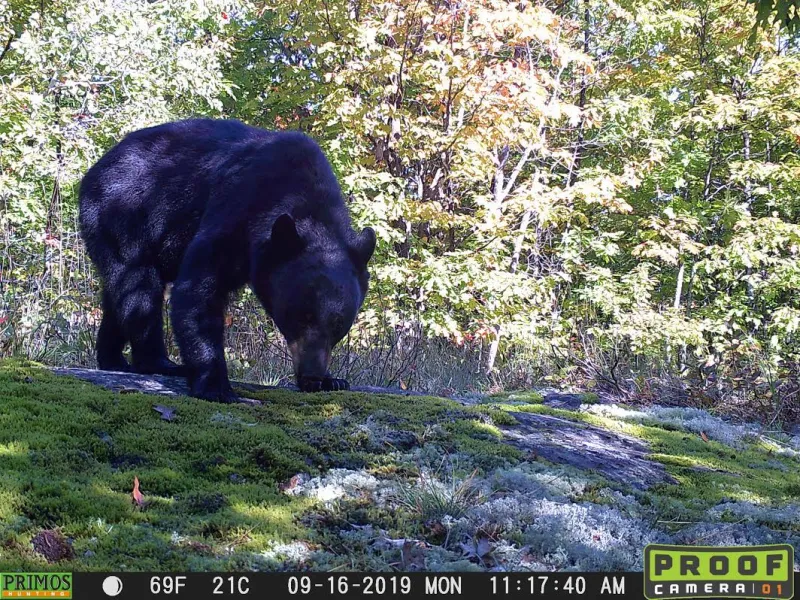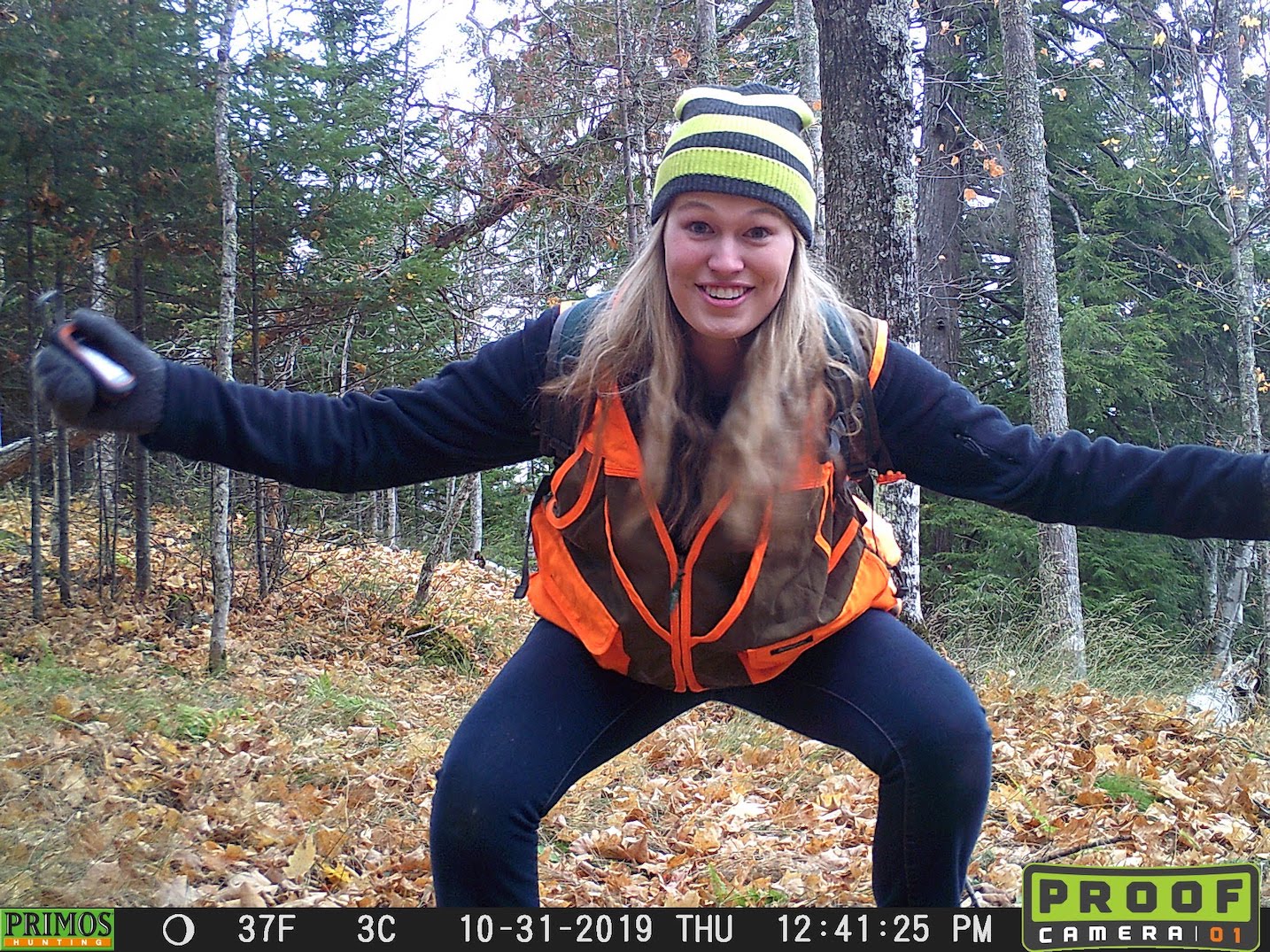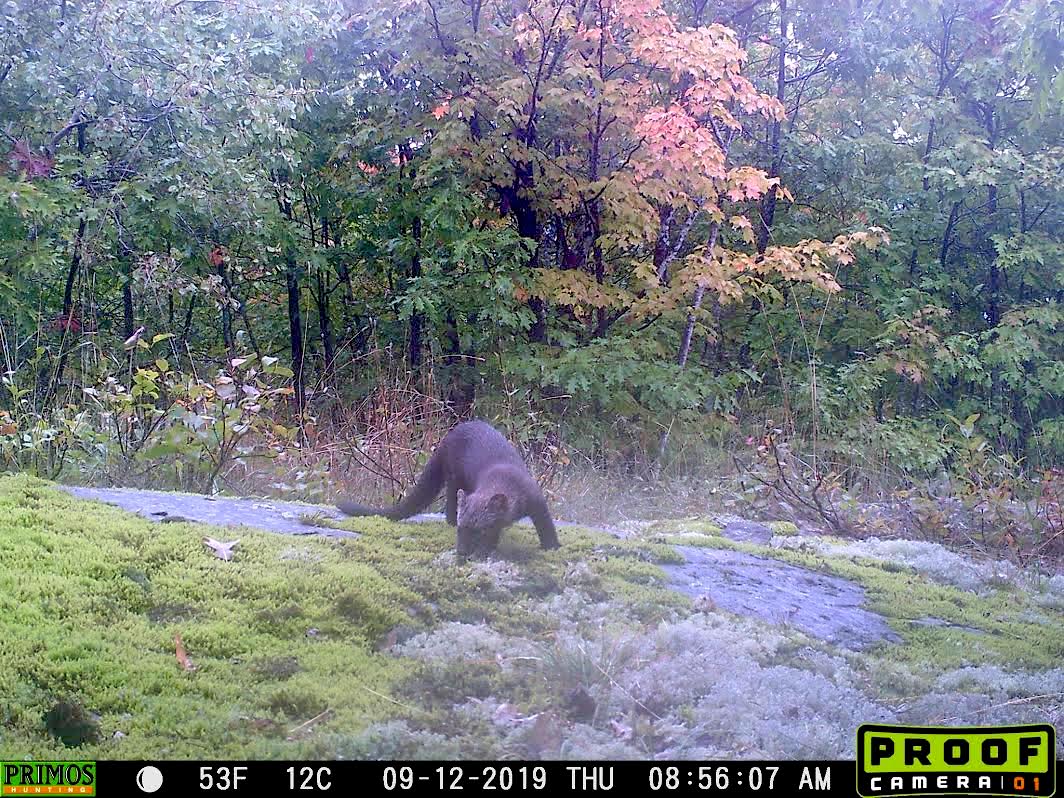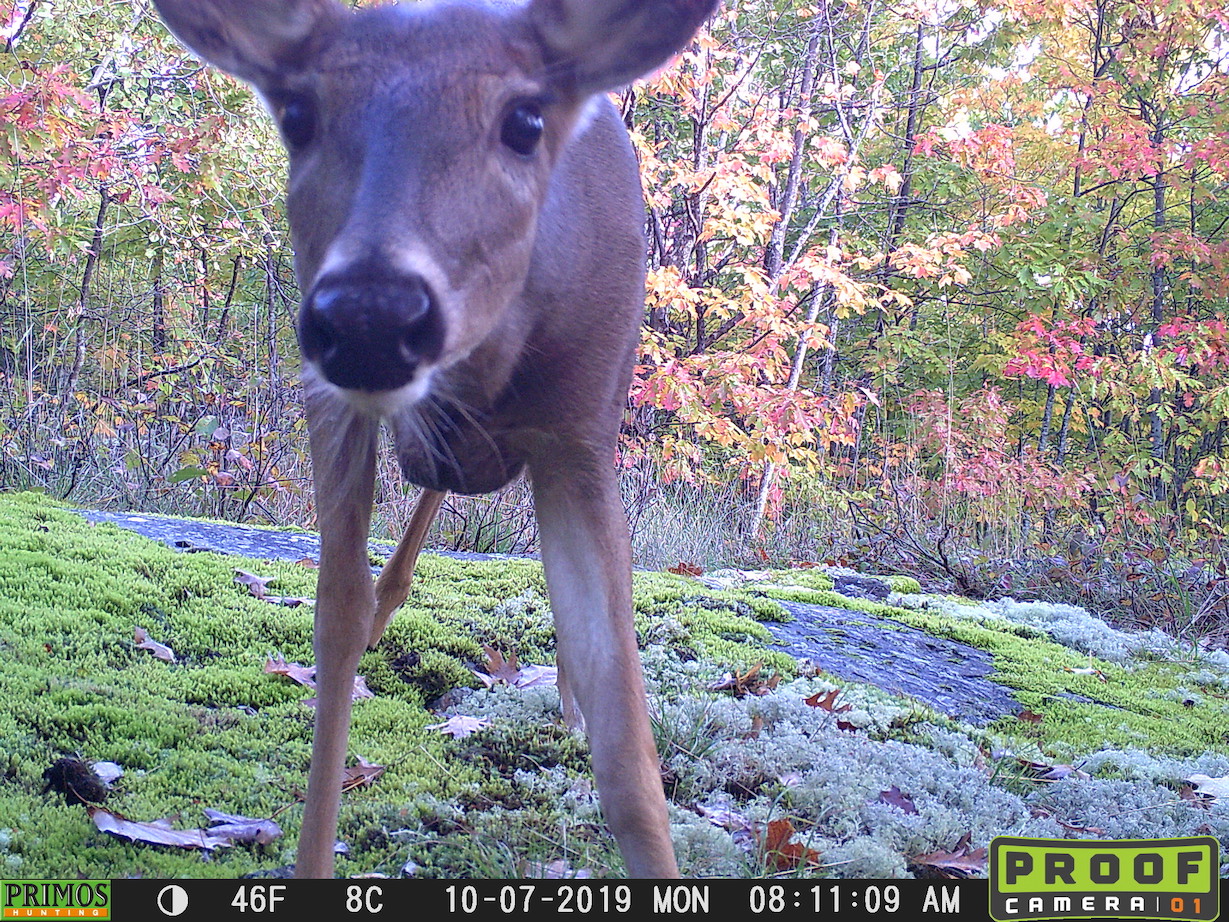Tru Hubbard, a biology master's student at Northern MIchigan University, will receive NMU's Technology Innovation Student Award for her research on how human recreation impacts carnivore habitat use and behavior across multi-use lands. Her Yooper Wildlife Watch project captures images of animal movement through 30 trail cameras and incorporates newly developed data management and analysis techniques.
Hubbard's collaborator on the effort is Amelia Bergquist, a post-secondary science education master's student, who is developing an undergraduate research-focused ecological curriculum. Both are advised by NMU biology professor Diana Lafferty.
Yooper Wildlife Watch has contributed imagery to a nationwide camera trapping effort coordinated by The Smithsonian Institution and North Carolina Museum of Natural Sciences. Lafferty said NMU students contributed more data than 60 other institutions nationwide that participated in Snapshot USA.
“After talking with Dr. Lafferty, I knew this was the perfect fit,” said Hubbard about the multidisciplinary project. “I would have the chance to work with species that fascinated me and get experience performing field work. Also, my research has the opportunity to provide valuable information that can be used by land managers. I was so excited to get started and it has been a great experience so far. Although it has come with its challenges, it has provided me with chances to learn new skills and embrace new ideas.”
The project is designed to capture images of the intimate lives of wildlife through the non-invasive tool of camera trapping. Trail cameras have been placed across the northeast region of Marquette Country in areas such as Harlow Lake, Echo Lake, Blemhuber Lake, Sugarloaf Mountain and Hogback.
The camera locations were established using a randomized program that was able to remove any bias that might otherwise occur if someone personally selected the locations. Data is collected every two to three months. The 24 species that have been observed so far include red fox, gray fox, gray wolf, North American porcupine, fisher, American marten, American black bear, turkey and white-tailed deer.
Because the cameras operate remotely, Hubbard said it is necessary to hike to each location and retrieve the SD card, then replace it with another. Undergraduate students assist in this task and also help sift through tens of thousands of images to identify species.
“Finding research opportunities as an undergraduate can be challenging; I know it was for me,” said Hubbard. “So it is a privilege to be able to offer this kind of valuable experience. Being able to get involved in undergraduate research is essential for students who wish to continue to grad school, and even for obtaining working positions in the area of wildlife biology.”
Cait Sternberg, an environmental science major with a biology minor, is among the undergraduate students participating in the project.
“Yooper Wildlife Watch has been a great opportunity to gain skills relevant to my major and career path, including research methods and etiquette, field work and technology,” said Sternberg. “This is one of my first ‘real-world' experiences with biology research, and it has made me realize my interest in possible ecology careers. The skills gained have helped me to build my resume and apply for internships.”
“By training every student in camera deployment, maintenance, imagery classification and data analysis, Tru and Amelia are helping to train the next generation of professional wildlife ecologists in essential research practices, providing each of them unique opportunities to grow personally and professionally in their academic journeys,” said Lafferty. “Moreover, by engaging diverse NMU undergraduates in authentic ecological research, Tru and Amelia are creating a collaborative and supportive community of scholars in my classroom and beyond.”
Hubbard said a number of questions related to human impact on carnivore habitats have yet to be answered. She plans to further explore how varying forms of recreation such as biking, hiking and four-wheeling affect wildlife.




